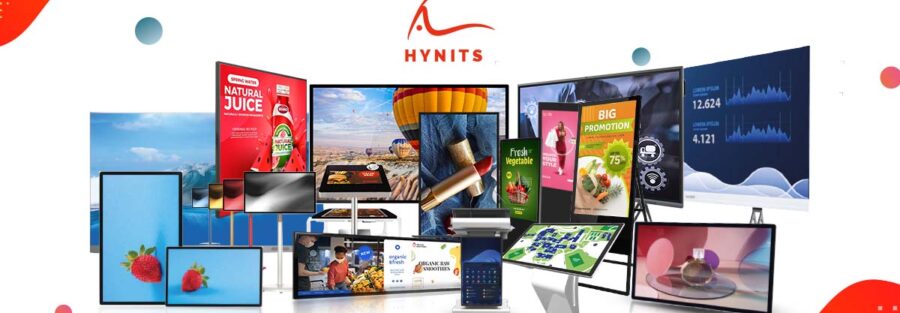How to Choose the Right Digital Signage Display for Your Business?
Introduction
Digital signage has revolutionized business communication by offering dynamic and real-time content delivery. Whether it’s a retail store, restaurant, healthcare facility, or corporate office, digital displays are used to inform, promote, and engage audiences more effectively than traditional static media.
However, the effectiveness of digital signage depends heavily on choosing the right type of display. With multiple display technologies, sizes, features, and use cases, making the right choice requires careful planning aligned with business goals and customer experience.
This assignment explores the key considerations in choosing the right digital signage display and provides guidelines tailored to different business environments.
2. Why Choosing the Right Display Matters
Selecting an appropriate digital signage display:
- Enhances visibility and engagement
- Improves brand image and professionalism
- Offers better return on investment (ROI)
- Reduces maintenance and energy costs
- Ensures reliability in diverse environments
Making the wrong choice can lead to unnecessary expenses, poor customer experience, or underutilized technology.
3. Key Factors to Consider
a. Location: Indoor vs Outdoor
- Indoor Displays: Require lower brightness (300–500 nits), less rugged, usually cheaper.
- Outdoor Displays: Require high brightness (≥2,000 nits), weatherproof (IP-rated), anti-glare, vandal-resistant.
b. Display Size and Placement
- Based on viewing distance and space availability.
- Larger spaces (e.g., airports or malls) need bigger screens (55″+), while small stores might use 32–43” displays.
- Portrait vs Landscape orientation depending on content layout.
c. Brightness and Resolution
- Brightness (measured in nits) affects visibility.
- Resolution: Full HD (1080p) is standard; 4K is preferred for large or premium displays.
- For highly detailed content or close-up viewing, higher resolution is essential.
d. Content Type
- Static images, videos, interactive touch, real-time feeds (weather, news, etc.)
- Choose displays that support media playback software and desired content formats.
e. Connectivity & Compatibility
- HDMI, USB, Wi-Fi, Ethernet, Bluetooth support.
- Integration with CMS (Content Management System) platforms.
- Cloud connectivity for remote content updates.
f. Durability and Reliability
- Commercial-grade screens are designed for 24/7 operation.
- Heat resistance, dust protection, and screen lifespan are vital for continuous use.
g. Touchscreen Capability
- Needed for interactive kiosks, wayfinding, and self-service applications.
- Capacitive (high responsiveness) vs Infrared (used in rugged environments).
h. Budget Constraints
- Balance between initial cost and long-term ROI.
- LED walls are more expensive but impactful; LCDs are more budget-friendly.
4. Types of Digital Signage Displays
Type | Best For | Pros | Cons |
LCD Displays | Retail stores, offices | Affordable, good quality, widely available | Lower brightness, not ideal for outdoor use |
LED Displays | Billboards, concerts, large venues | High brightness, scalable, eye-catching | Expensive, complex installation |
OLED Displays | High-end indoor environments | Excellent contrast and color | Expensive, not ideal for 24/7 use |
Touchscreens | Kiosks, self-service stations | Interactive, user-friendly | More prone to wear and tear |
Video Walls | Control rooms, large advertising panels | Impressive visuals, customizable | Expensive, higher maintenance |
5. Industry-Specific Recommendations
Retail
- Use bright, attention-grabbing indoor displays
- Choose displays with remote content scheduling and high resolution
- 43″ to 55″ LCD or touchscreen recommended near product zones
Restaurants/QSRs
- Digital menu boards above counters
- 43–55″ commercial LCD with high brightness and anti-glare
- Outdoor drive-thru: weatherproof LED screens
Healthcare
- Waiting room displays: informative and calm visuals
- Lobby signage: larger screens for announcements
- Interactive touchscreens for wayfinding
Corporate Offices
- Meeting room displays, digital directories
- Wall-mounted LED or LCD screens
- 24/7 operation capability needed
Transportation Hubs
- Need high-brightness LED for visibility
- Real-time scheduling content
- Durability in high-traffic areas is essential
6. Conclusion
Choosing the right digital signage display is a strategic decision that affects operational efficiency, brand perception, and customer engagement. The key lies in understanding the business’s unique needs, environmental challenges, and content strategy. By assessing the factors discussed – such as display size, brightness, resolution, and durability – businesses can ensure their investment yields maximum value. In the evolving digital communication landscape, selecting the right digital signage display is not just a technical decision but a competitive necessity.
7. References
- Digital Signage Today. (2024). Display Technology Guide.
- Samsung Business Insights. (2023). Choosing the Right Display for Your Business.
- LG Business Solutions. (2023). Commercial Display Solutions Overview.
- InfoComm International. (2024). AV Display Standards & Recommendations.



